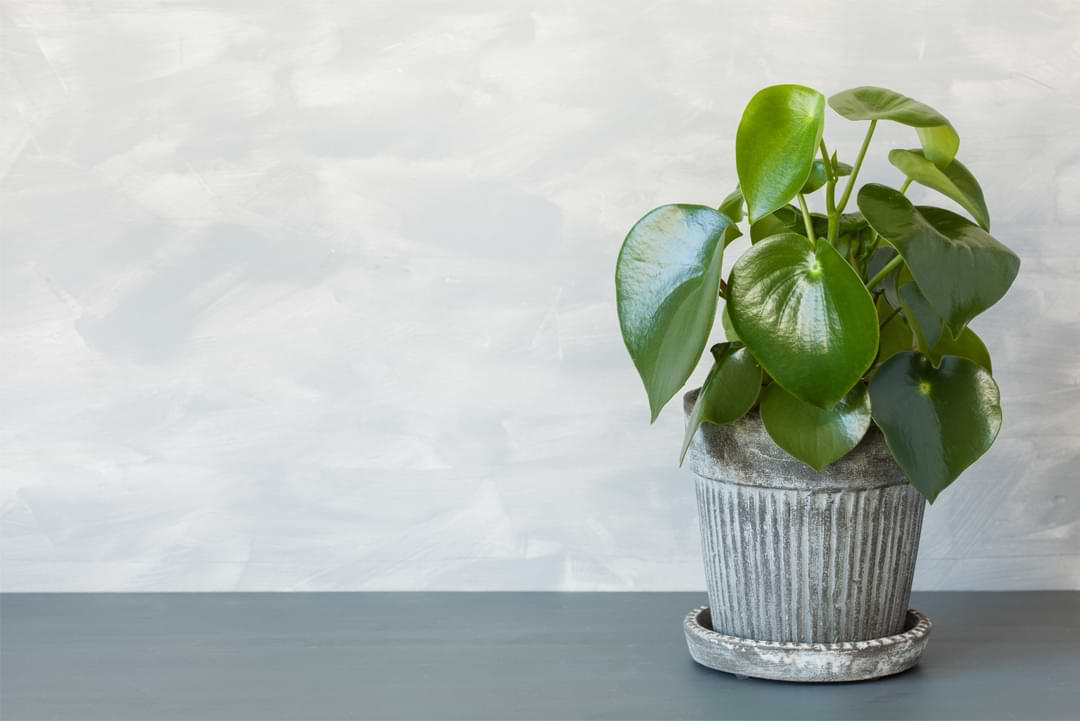If you love flashy foliage and low-maintenance houseplants, peperomia plants might be great for you! These plants come in both solid-green and variegated varieties, displaying beautiful swathes of dark and light green, silver, and even red.
Peperomia plants are native to tropical regions in Mexico and South America, and are a member of the Piperaceae family, which means they’re relatives of the peppercorn plant. There are over 1,000 plants in the Piperaceae family, but only a few are kept purely for ornamental purposes.
With its oblong, fleshy, heart- or arrow-shaped leaves, many houseplant lovers think of this as the little sister to the rubber plant, though it’s much easier to care for. It’s also non-toxic, so it’s a great choice for parents and pet owners!
Their small size, tolerance for low light, and stunning foliage make peperomia plants ideal for small spaces and beginning plant parents. So if you want a gorgeous plant without a lot of work, we’ve got you covered!
Table of Contents
Basic Care for Peperomia Plants
Soil and Potting
Peperomia plants don’t like wet feet, so make sure you choose a pot with drainage and a light, fast-draining soil like a cactus mix. This plant is slow-growing, so you will only need to repot every year or two. If you notice roots popping out the top or bottom or if the soil becomes compacted, it’s time to repot!
Light
Peperomia plants do best in bright, indirect sunlight, but they also tolerate lower light very well. These plants typically grow on forest floors under thick canopies, so they’ve evolved to work with less sunlight if necessary.
If you have a bright window, place your peperomia plant near it but not directly in the sun’s rays. If you don’t have a lot of natural light, do your best. Place it in the best area you have, and your peperomia should be just fine as long as you don’t overwater it.
Water
One of the best things about peperomia plants is that they’re drought-resistant, which means they won’t throw a fit if you forget to water them one week. Much like succulents, their thick, fleshy leaves allow them to hang onto water to get them through dry times.
Allow the soil to dry out between watering, which means you’ll likely be watering every 10-14 days throughout most of the year. Water thoroughly and empty the drainage trays immediately.
Whatever you do, don’t overwater your peperomia. Don’t water if the soil still feels damp, and give the soil a chance to drain completely when you do water. Drainage is important!
Temperature and Humidity
While these plants do hail from warm, humid tropical regions, they do well with most indoor temperature and humidity levels. If you notice cracking in the leaves, you may want to set it on a pebble tray to provide a little more humidity.
To do this, just fill a tray with pebbles and water and set the pot on top, making sure the soil and roots do not touch the water.
Keep your plant away from drafts and vents, space heaters, and lit fireplaces.
Fertilizer
Like all plants, peperomia plants need nutrients in order to thrive. We recommend a liquid fertilizer that you can dilute so you can control how much your plant is getting.
I usually mix a little Indoor Plant Food into my watering can each week when I make my rounds. It’s easy to use, and is appropriate for all houseplants (aside from succulents), including peperomia! Fertilize with each watering during the spring and summer and once a month during the fall and winter. Your peperomia’s foliage will look gorgeous!
Troubleshooting
You won’t have much trouble with pests coming after your peperomia, and they tolerate a wide variety of light conditions. Your biggest risks are over- or underwatering.
If you notice soft, yellowing leaves or dark, squishy stems, you’re probably overwatering your peperomia. Ease up on the watering and try giving it a little more light if possible. If the problem is severe, you may want to repot your plant into fresh soil and a clean pot.
If you notice dry spots on your peperomia, crispy leaves, or leaf drop, you might be underwatering. If the soil feels very dry, give your plant a drink and keep a closer eye on it to make sure it’s not dry for too long between waterings.
If your plant is in direct sunlight and you suddenly notice light-brown or reddish spots forming on the leaves, your plant might be sunburned! Move it out of direct sunlight and into a more appropriate spot.
The Perfect Beginner Houseplant
If you’re new to houseplants (or just want an easygoing plant to add to your collection), try a peperomia! It will add a pop of color and beauty to your space without a lot of work. It’s the perfect bang for your buck!




